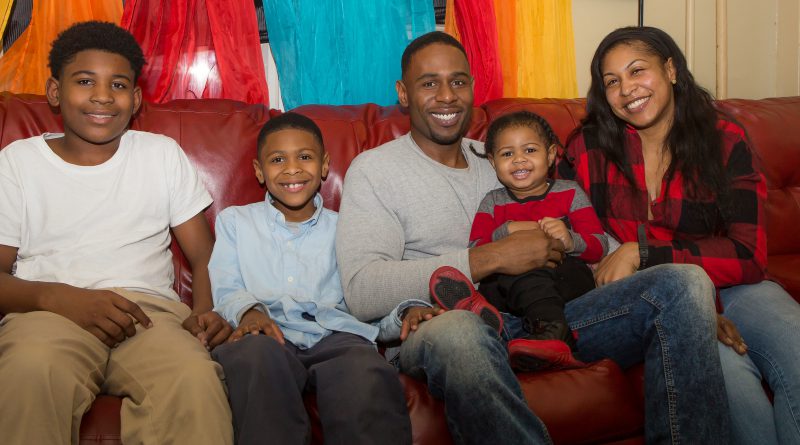There’s No Place Like Home
The Family Re-Entry Pilot Program helps ex-offenders rebuild their lives
The Family Re-Entry Pilot Program helps ex-offenders rebuild their lives
Darnell Smith ran into a little trouble back when he was 19 years old. It was a non-violent crime committed off NYCHA property, and he did some time in prison to pay his dues. Now Mr. Smith is 34 years old, living with his wife and three sons at Saint Nicholas Houses and working a union job in construction.
Mr. Smith’s opportunity to rebuild his life is being made possible, in part, by NYCHA’s Family Re-entry Pilot Program. A collaboration between NYCHA, the Vera Institute for Justice, the Corporation for Supportive Housing, and other government agencies and community-based service providers, the program allows people who have been released from incarceration within the past three years to live with their families in NYCHA developments. As part of the application process, individuals demonstrate that they are motivated to make a positive change in their lives. You can read more about his experience coming into the program in the February 2015 issue of the Journal. Upon successful completion of the two-year program, participants can be added to the lease permanently.
Mr. Smith plans to study construction project management to further his career. “I wouldn’t have been able to do that if I didn’t have a place to call home and build a foundation. I’m certainly grateful for this opportunity for peace. You can turn a whole new page in your life and start a new story.”
Twenty-eight-year-old Darryl Bullock lived in a shelter for two months upon his release because his felony conviction prevented him from moving back home. After getting approved for the Family Re-entry Program, he moved in with his mother at Lincoln Houses, completed job training, and got certificates to work in the construction industry. He’s currently employed by NYCHA, installing and maintaining temporary light towers as part of the Mayor’s Action Plan for Neighborhood Safety.
“Moving in with my mom was key to doing what I want to do,” Mr. Bullock said. “I’m not worried about finding a place to live, or about the cleanliness and drugs in a shelter. It’s better for me to live with her. I don’t know where I would be if I weren’t. With a home, it’s easier to go back to doing well.”
Another participant, Tommy Wu, moved back home with his parents and sister at Harborview Terrace upon his release. “I took the wrong path, I broke the law, and I was incarcerated,” he explained. “While I was incarcerated, I accepted responsibility for what I did and I paid for the consequences.” Mr. Wu is working as a laborer but intends to become a car service driver, as the flexible hours will allow him to spend more time with his kids. “[The Family
Re-entry Pilot] is a great program—they’re giving us a second chance. Being with my family, receiving their love and support, gives me a much better chance to stay out of trouble.”
Research shows that access to housing and reunification with family significantly increase the likelihood that a person leaving incarceration will be able to get (and keep) a job, stay drug free, and not commit another crime. Of the 91 people currently participating in the program, about half are now employed and many others are continuing their education. None have been convicted of a new crime.
Raul Burgos is one of the eight people who have successfully completed the program since it launched in November 2013. He lives with his mother at Sotomayor Houses and is in the process of being added to the lease permanently. While working on his bachelor’s degree in social work at Lehman College, he’s starting a non-profit organization to help disenfranchised youth. You can read more about his story in the February 2015 issue of the Journal.
To learn more about the program, including eligibility requirements, visit NYCHA’s website (www.nyc.gov/NYCHA).

